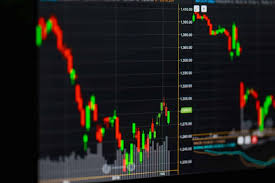
The Ultimate Guide to Forex and CFD Trading
Forex and CFD trading have become increasingly popular methods of investing in international markets. Both offer unique opportunities and risks, attracting traders with varying degrees of experience. For instance, you can find insightful information about forex cfd trading Vietnam Brokers, helping you choose the right platform for your trading journey. This guide will delve into the fundamental principles of forex and CFD trading, the strategies you can employ, and how to optimize your trading experience.
Understanding Forex Trading
Forex, or foreign exchange, refers to the global marketplace for trading national currencies against one another. It’s the most liquid market in the world, with a daily trading volume exceeding $6 trillion. The forex market operates 24 hours a day, five days a week, allowing traders to enter and exit positions at almost any time.
The Basics of Forex Trading
In forex trading, currencies are traded in pairs, with each pair representing the value of one currency relative to another. For example, in the EUR/USD pair, the price indicates how many US dollars are needed to buy one euro. Traders profit by buying low and selling high or selling high and buying low, depending on the market direction.
Key Concepts in Forex Trading
- Pips: The smallest price movement in a currency pair. It typically refers to the fourth decimal place in a currency quote.
- Leverage: Allows traders to control larger positions with a smaller amount of capital. While it can amplify profits, it also increases potential losses.
- Margin: The amount of money required to open a leveraged position, allowing traders to participate in larger trades.
- Bid/Ask Price: The bid price is the price at which a trader can sell a currency pair, while the ask price is the price at which they can buy.
What are CFDs?
Contracts for Difference (CFDs) are popular derivatives that allow traders to speculate on the price movements of various financial instruments, including stocks, commodities, indices, and forex, without owning the underlying asset. CFDs work on the principle of ‘contracting’ the difference in the price from when the contract is opened to when it is closed.
Benefits of Trading CFDs
- Leverage: Similar to forex, CFDs offer the possibility of using leverage, allowing traders to open larger positions than they could with their own capital.
- Diverse Range of Markets: CFDs give access to a wide array of financial markets, making it easier for traders to find opportunities and diversify their portfolios.
- Short Selling: CFDs enable traders to profit from falling markets by selling contracts before buying them back at a lower price.
- No Ownership: Traders can speculate on price movements without needing to own the asset, which can reduce costs and regulatory complications.

Trading Strategies for Forex and CFDs
Successful trading requires a well-thought-out strategy. Here are some popular strategies that can be employed in both forex and CFD trading:
1. Trend Following
This strategy involves identifying and following the prevailing market trend. Traders enter long positions when the market is trending upwards and short positions during downtrends.
2. Range Trading
Range trading takes advantage of price fluctuations within defined levels of resistance and support. Traders buy at the support level and sell at the resistance level, looking for price reversals.
3. Breakout Trading
In breakout trading, the focus is on identifying key levels at which the price breaks out of a range. Traders enter positions when they anticipate significant price movements beyond support or resistance levels.
4. Scalping
Scalping involves making quick trades throughout the day to profit from small price movements. Scalpers rely on high leverage and quick execution to capitalize on market volatility.
Risk Management in Forex and CFD Trading
Effective risk management is crucial for every trader to protect their capital. The following principles can help manage risk:

1. Set Stop-Loss Orders
Stop-loss orders automatically close a trade at a predetermined loss level, helping to minimize potential losses and protect investment capital.
2. Diversify Your Portfolio
Diversification helps in spreading risk across different assets or markets, minimizing exposure to any single investment’s poor performance.
3. Use Proper Leverage
While leverage can enhance potential profits, it can also amplify losses. Traders should understand their risk tolerance and use appropriate leverage accordingly.
4. Keep Emotions in Check
Emotional trading can lead to suboptimal decisions. Adhering to a trading plan and utilizing analysis can help mitigate emotional biases.
The Role of Brokers in Forex and CFD Trading
Brokers play a fundamental role in facilitating forex and CFD trading. They provide traders with access to the markets, trading platforms, and educational resources. Choosing a reputable broker is essential for a positive trading experience. Key factors to consider include:
- Regulation: Ensure that the broker is regulated by a recognized financial authority to guarantee the integrity of your trading environment.
- Trading Platforms: Look for user-friendly trading platforms with high-quality charting tools and functionalities tailored to your trading style.
- Spreads and Fees: Analyze the cost of trading – lower spreads and commissions can significantly improve long-term profitability.
- Customer Support: Reliable customer service can assist in resolving issues and inquiries, enhancing your trading experience.
Conclusion
Forex and CFD trading offer exciting opportunities for profit, but they come with significant risks. By understanding market mechanics, implementing sound trading strategies, managing risk effectively, and selecting the right broker, traders can enhance their trading journey. Continuous learning and adaptation to market changes are vital for long-term success in this dynamic field.
Leave a Reply